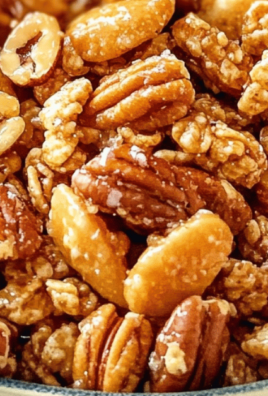Introduction
In the pantheon of American comfort foods, few treats evoke as visceral a wave of nostalgia as the humble cafeteria brownie. For over half a century, this unassuming dessert has occupied a sacred space in collective memory—its crackly top, fudgy interior, and faintly earthy cocoa aroma transporting generations back to lunchroom tables, crumpled napkins, and the clatter of plastic trays. This recipe, meticulously preserved from 1970s school kitchen archives, represents more than mere confectionery: it is edible anthropology, a testament to how simplicity and restraint can yield enduring culinary magic.
Born in an era when institutional cooking prioritized shelf stability and cost efficiency, these brownies paradoxically achieved greatness through limitation. With no premium chocolate or artisanal flours, lunchroom cooks engineered depth of flavor via precise ratios—a full cup of butter to one cup of flour, unsweetened chocolate for intensity, and just enough sugar to caramelize into that iconic glossy crust. The result was a textural marvel: dense yet tender, rich without cloying sweetness, designed to withstand hours under heat lamps while maintaining structural integrity.
What these brownies lack in modern gourmet pretensions, they compensate for with nostalgic authenticity. Each bite channels the democratic joy of shared childhood experiences—the anticipation of dessert-first eaters, the illicit thrill of trading carrot sticks for extra squares, the universal language of chocolate melting on a tongue still warm from recess. Yet beneath this sentimental veneer lies sophisticated food science: the emulsion of eggs into molten chocolate-butter creates a velvety crumb, while minimal leavening ensures the dense chew that distinguishes cafeteria-style from cake-like iterations.
Reviving this recipe today invites both preservation and reinterpretation. While purists may insist on exact historical replication (down to the vintage aluminum pans), contemporary adaptations—gluten-free flour blends, ethically sourced chocolate, or a sprinkle of flaky salt—honor the spirit of resourcefulness that defined mid-century lunchrooms. Whether served with ice-cold milk in a lunchbox or plated with artisanal gelato, these brownies remain a bridge between eras, proving that some flavors transcend time when crafted with care and communal love.
Ingredients:
1 cup (227g) salted butter
4 oz (113g) unsweetened baking chocolate
2 cups (400g) granulated sugar
4 large eggs, room temperature
1 tsp vanilla extract
1 cup (120g) all-purpose flour
½ tsp baking powder
½ tsp salt
1 cup (175g) semi-sweet chocolate chips
Step-by-Step Execution
Melt Base
Combine butter and unsweetened chocolate in a double boiler until smooth. Cool to lukewarm (110°F/43°C) to prevent egg curdling.
Sugar Integration
Whisk sugar into melted chocolate mixture until grainy texture forms—this creates the signature crackly top.
Egg Emulsion
Beat eggs one at a time, mixing 60 seconds per egg. Add vanilla. The batter should ribbon when lifted.
Dry Incorporation
Sift flour, baking powder, and salt. Fold into wet ingredients until just combined—overmixing causes toughness.
Texture Engineering
Stir in chocolate chips. Pour into 9×13″ pan lined with parchment. Bake at 350°F (175°C) for 25-28 minutes.
Why It Works
Butter-to-Flour Ratio: 1:1 ratio ensures fudgy density
Double Chocolate: Unsweetened base + chips create layered cocoa intensity
Minimal Leavening: ½ tsp baking powder prevents cake-like rise
Sugar Crystallization: Undissolved granules form shiny crust
Modern Adaptations
Gluten-Free: Substitute flour with 140g almond flour + 20g tapioca starch
Dairy-Free: Use coconut oil + 85% dark chocolate
Espresso Boost: Add 1 tbsp instant coffee to melted chocolate
Salty Edge: Sprinkle flaky sea salt pre-baking




Leave a Comment